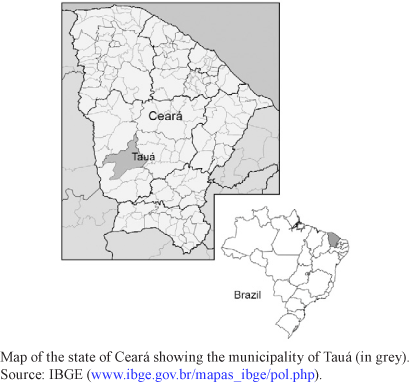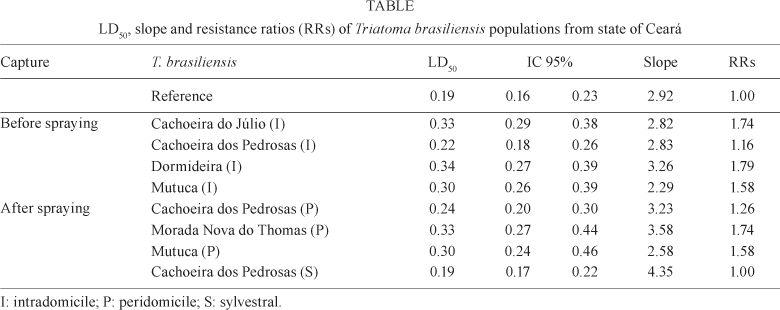After controlling Triatoma infestans in Brazil, other species of triatomine that were considered minor in the transmission of Chagas disease became important. The persistence of Triatoma brasiliensis in Northeastern Brazil, associated with reinfection of domestic environments recently sprayed with pyrethroids, may be a signal of susceptibility alteration of this species to this insecticide. Specimens of T. brasiliensis from the municipality of Tauá, state of Ceará, were captured before and one year after spraying. They were submitted to bioassays using deltamethrin. The LD50 ranged from 0.19-0.33 ng of deltamethrin/nymph. The resistance ratio among samples from Tauá varied from 1.16-1.79 in the samples captured before the spraying and 1.00-1.74 in the samples captured one year after spraying, demonstrating that the two populations were equally susceptible to deltamethrin. The small difference in susceptibility between the two captures suggests that T. brasiliensis obtained in the second capture are from new invasions of the domestic environment and that the insecticide did not select resistant individuals. Therefore, it is suggested that T. brasiliensis control be carried out supplementing the regular use of pyrethroids with complementary measures, such as improvement of the dwellings and health education.
Triatoma brasiliensis; pyrethroids resistance; Chagas disease; state of Ceará


